When discussing flowers that start with the letter “H,” one notable example is the hydrangea. Hydrangeas are renowned for their large, lush blooms and come in various colors, including pink, blue, and white. Another flower starting with “H” is the hibiscus, which boasts vibrant, trumpet-shaped blossoms and is commonly found in tropical regions.
Additionally, the heather is a charming flowering plant known for its delicate clusters of tiny blooms, often seen in shades of pink, purple, or white. These “H” flowers add beauty and color to gardens and landscapes worldwide.
Let’s continue exploring the world of flowers that start with the letter “H” by reading the article below.
Different Types of Flowers that Start with H
Hemerocallis Fulva
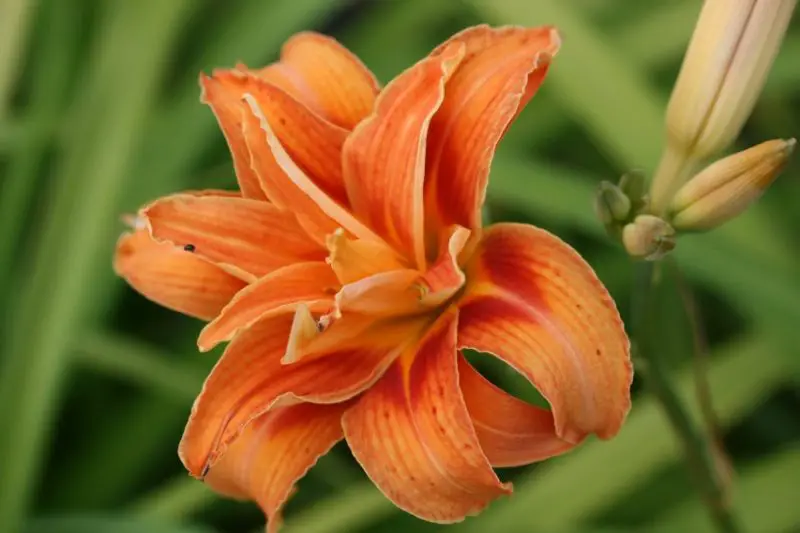
Hemerocallis fulva is a member of the Asphodelaceae family and has broad leaves and spindle-shaped roots. Its non-fragrant, tangerine-red to orange-yellow blooms bloom in the morning and fade by evening. The inner petals have a characteristic ‘v-shaped’ pattern.
It is indigenous to southern China and grows well in wet gullies between 300 and 2500 meters above sea level. It is also resistant to cold and drought. Both the roots and the leaves contain therapeutic qualities that improve vision, lower cholesterol, and support brain function.
Hemerocallis Hybrid
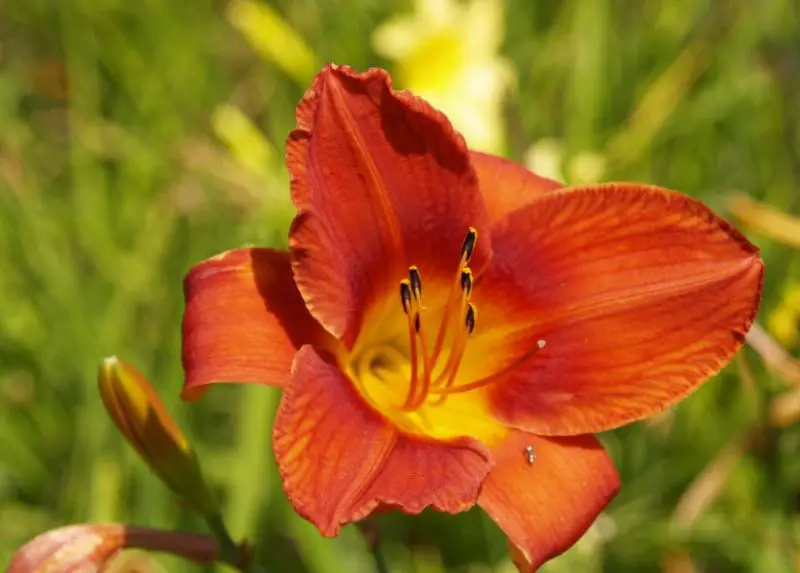
The perennial herb Hemerocallis hybrid, which belongs to the Lily family, has thick, fleshy roots and short rhizomes. It has aromatic top-borne umbel inflorescences and is covered in lush green, linear basal leaves. The petals of the funnel-shaped corolla curve outward, and it blooms briefly in July and August. It is native to China and Japan, where it can tolerate semi-shade, drought, and lots of light. Robust and adaptable, it may be planted in a variety of places and has therapeutic qualities that help with edema, dysuria, and snakebite.
Hemerocallis Lilioasphodelus
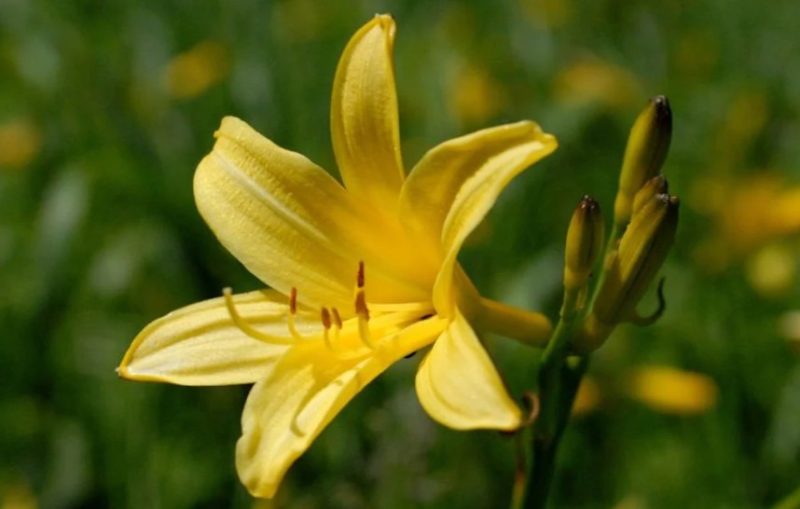
Hemerocallis lilioasphodelus is a member of the Asphodelaceae family and has long, fleshy leaves and roots that resemble cords. With lanceolate bracts, its flower scape elongates the leaves by the same amount or slightly more. The flower is pale yellow in color, with lobes that measure 5-7 millimeters and a tube length of 1.5–2.5 cm. It can be found in China, Russia, and Europe, growing between 500 and 2300 meters high in a variety of environments. The plant is valued for being decorative as well as having edible flowers and therapeutic roots.
Heracleum Moellendorffii Hance
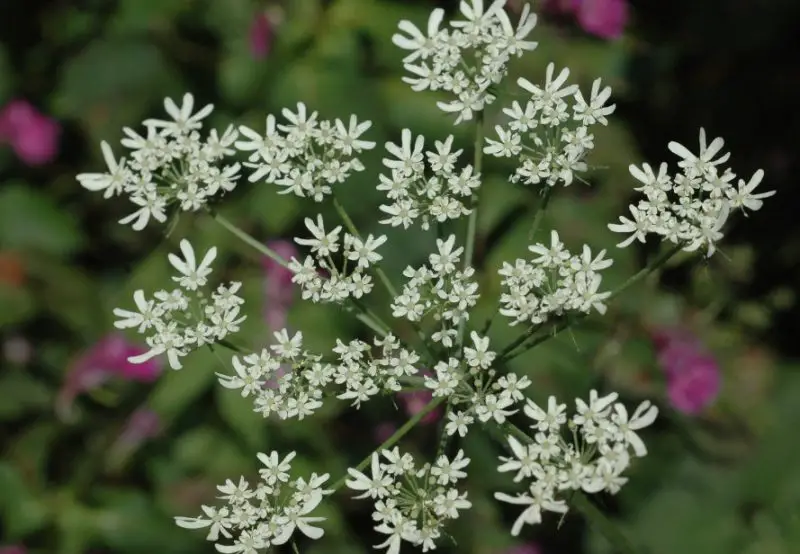
Short-haired hogweed, also known as Heracleum moellendorffii Hance, is a perennial herb in the Apiaceae family’s Heracleum genus. It has pinnate leaves with broad oval or ovate leaflets, and an upright stem with branching at the top. Its broad, round, pale brownish-yellow fruits are produced by the compound umbel inflorescences, which also generate white petals. It prefers chilly, humid conditions and good, loose soil. It grows in gloomy, moist parts of China and blooms from July to September.
Hibiscus Mutabilis
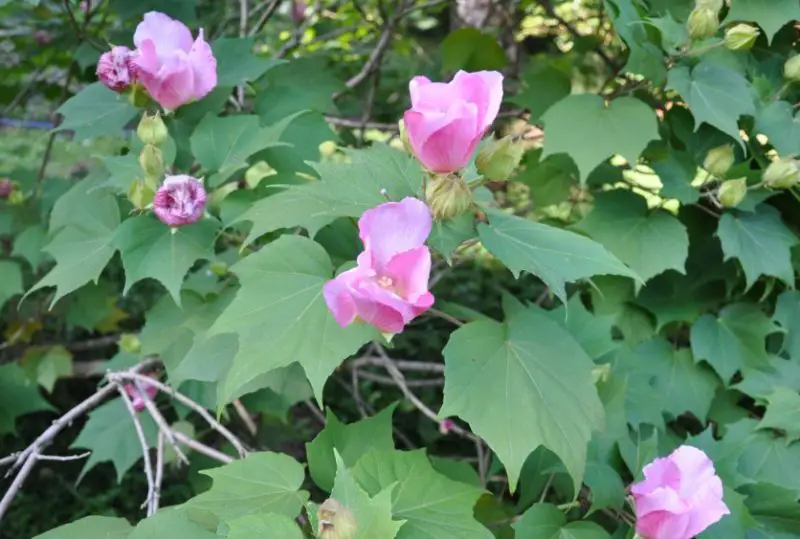
Confederate Rose, or Hibiscus mutabilis, is a woody plant of the Hibiscus genus in the family Malvaceae. Its finely hairy twigs have lanceolate stipules and ovate-heart-shaped leaves. Blooming singly, the blossoms turn deep crimson from white or pale pink at first. Its fruit resembles a fuzzy, flat globe. Cultivated throughout Japan and Southeast Asia, it originates from Hunan, China.
It grows best on rich, well-drained, slightly acidic soil and is frost-sensitive but water-tolerant in warm, humid climates. It has the ability to purify the air and is used medicinally to cure a variety of ailments.
Hibiscus Rosa-Sinensis
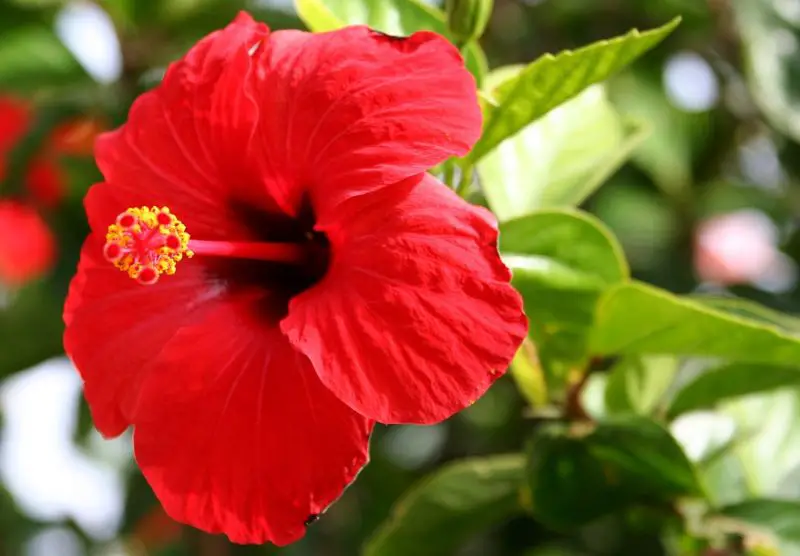
Because of its striking red color, Hibiscus rosa-sinensis, commonly known as the Chinese Rose or Buddha Malvaceae, is referred to as the “Big Red Flower” in South China. This evergreen shrub has cylindrical branches that are sparsely coated in hairs resembling stars and reaches heights of one to three meters. With the exception of a few along the veins on the back, the majority of its broad, ovate, or thin leaves are hairless. The solitary, frequently drooping flowers are located in the upper leaf axils and bloom all year round.
Hibiscus Sabdariffa
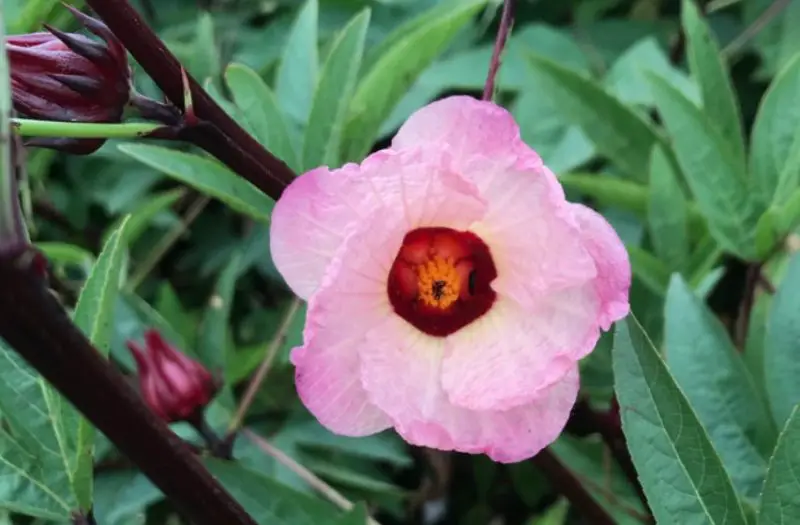
The annual herbaceous plant Hibiscus sabdariffa, which belongs to the Malvaceae family, can grow up to two meters in height. It has pale purple stems and branches, with oval leaves at the base and palmate leaves at the top. It favors tropical and subtropical areas with warm, moist, acidic soil. It flowers from July to October and fruits from November to December. It is known as the “Red Gem of Plants” because of its many health advantages and use in food coloring, tea brewing, and medicine.
Hibiscus Schizopetalus
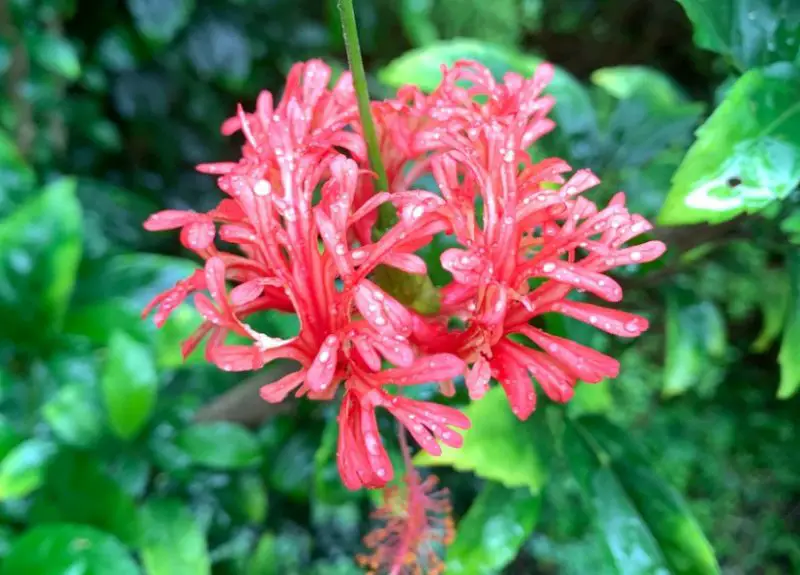
The perennial shrub Hibiscus schizopetalus, which belongs to the mallow family, can grow up to 3 meters tall and usually droops. It has thin, hairless, or pilose flower stalks that contain fruit that is cylindrical in length, coupled with elliptical or oblong leaves with pointy points and a wedge-shaped base. Its lantern-like appearance has earned it the name “Fringed Hibiscus,” and it blooms all year long.
It is native to East Africa and does best in humid environments with loose, rich, well-drained soil that is between 20 and 30 degrees Celsius. It’s incredibly decorative, good for parks, courtyards, and hedge planting, and its leaves and roots have therapeutic qualities.
Hibiscus Syriacus
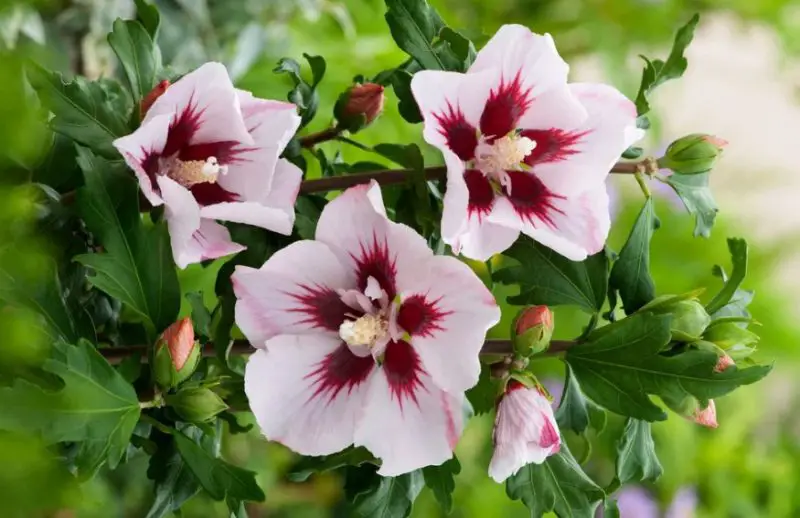
The deciduous shrub Hibiscus syriacus, which belongs to the mallow family, has great tree size and twigs coated with fluff that resemble yellow stars. Its bell-shaped, light purple blooms with fine hairs adorning them are complemented by its rhombic ovate leaves and linear pilose stipules. The fruit is ovoid, and the kidney-shaped seeds have long, soft white hairs on them.
Originating from Central China, it thrives in sunny, warm, humid areas and can withstand a range of soil conditions, temperatures, and frosts. Often found in gardens, it also aids in the reduction of pollutants in urban settings.
Hibiscus Tiliaceus
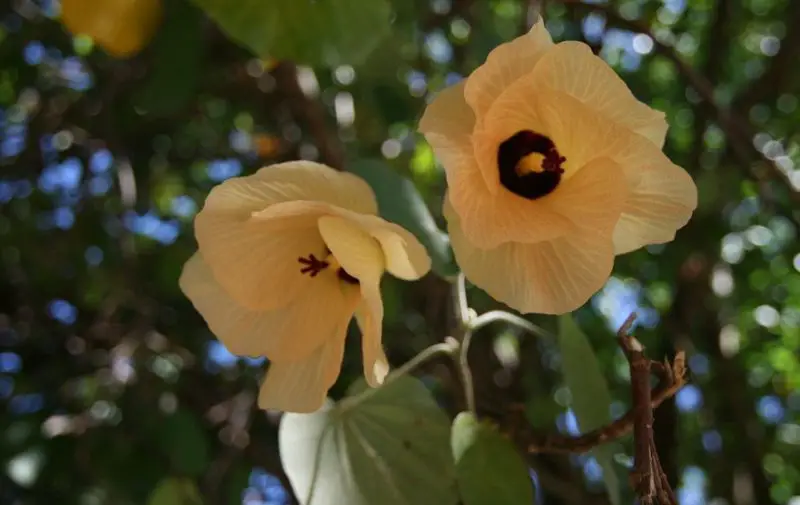
Round or widely ovate leaves and bell-shaped yellow blooms characterize Hibiscus tiliaceus, sometimes known as Yellow Hibiscus, an evergreen shrub or small tree. From tropical America, it is native, tolerant to cold, shade, and poor soil, and grows best in warm, humid regions. In addition to its medical properties, it has environmental advantages, including reducing erosion. Ropes may be made from the bark fiber, and the wood is tough and resistant to corrosion, making it ideal for shipbuilding and construction.
Hippeastrum Rutilum
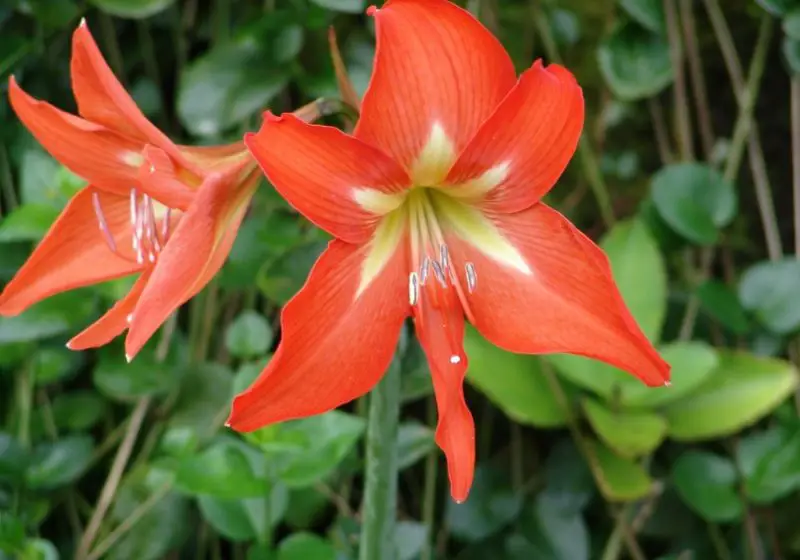
Hippeastrum rutilum is a perennial herb belonging to the Amaryllidaceae family. It has hollow flower stems covered in white powder and bright green strap-shaped leaves. Its purple-hued, oval-red tepals are surrounded by red stamens that hold linear oval anthers. It produces spherical capsules when it is in bloom in the summer.
It is indigenous to Argentina and Mexico and grows best in semi-shaded spots with sandy, well-drained soil. Often referred to as the “Rouge Hole,” it represents the quest for love but, if eaten, can be fatal or cause anorexia and diarrhea.
Hymenocallis Littoralis
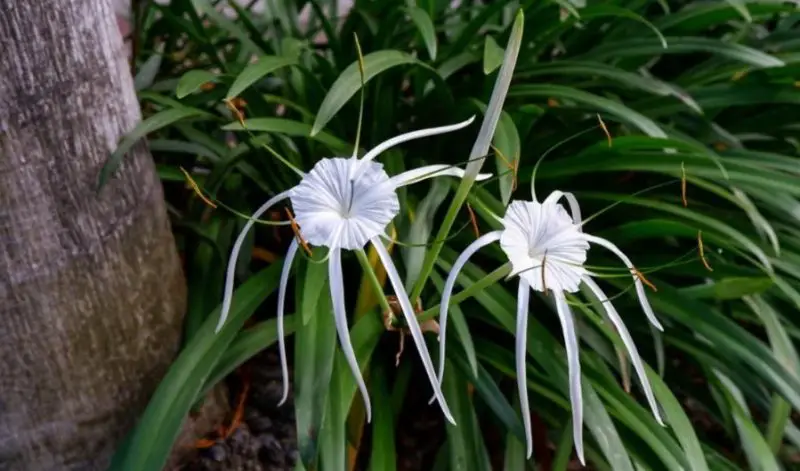
Easily recognized by its tall cylindrical stem, short elliptic-lanceolate leaves, and unique polygonal pale white flowers with smooth petals, Hymenocallis littoralis is also known as the Spider Lily. These blooms have a funnel-shaped corona below that resembles the legs of a crab or spider, with stamens attached to the neck.
It is indigenous to the tropical Americas and grows best on soil that is rich in humus, sunshine, and warm, humid weather. It is widely used for both therapeutic and decorative purposes due to its medicinal qualities, which include promoting blood circulation and relieving pain.
Hypericum Monogynum
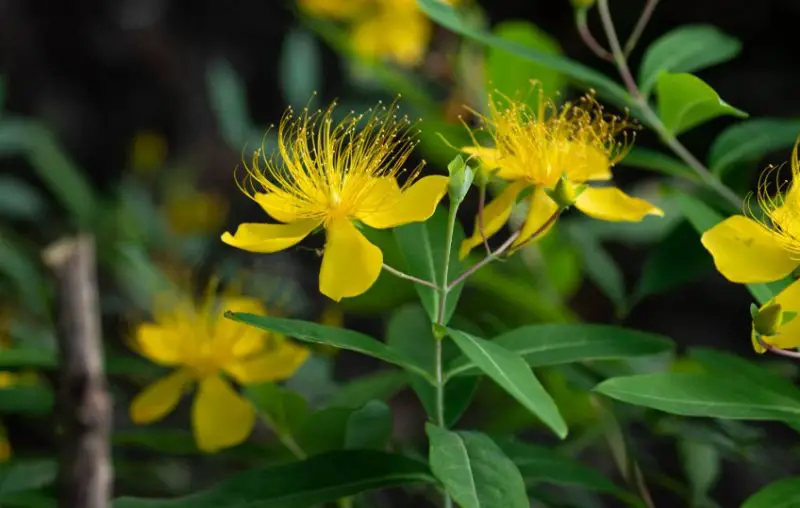
St. John’s Wort, or Hypericum Monogynum, is distinguished by its large, elliptical leaves, slender branches, and semi-evergreen status. In June and July, the plant blooms with golden flowers arranged in umbel inflorescences.
It grows well in wet, partially shady locations and does well in temperate regions. It is advised to mound soil around the base of the plant before winter to shield it from the cold. The fruit and roots of St. John’s Wort have therapeutic qualities that can be used to treat coughs, encourage lactation, and treat other conditions.
Hypericum Patulum
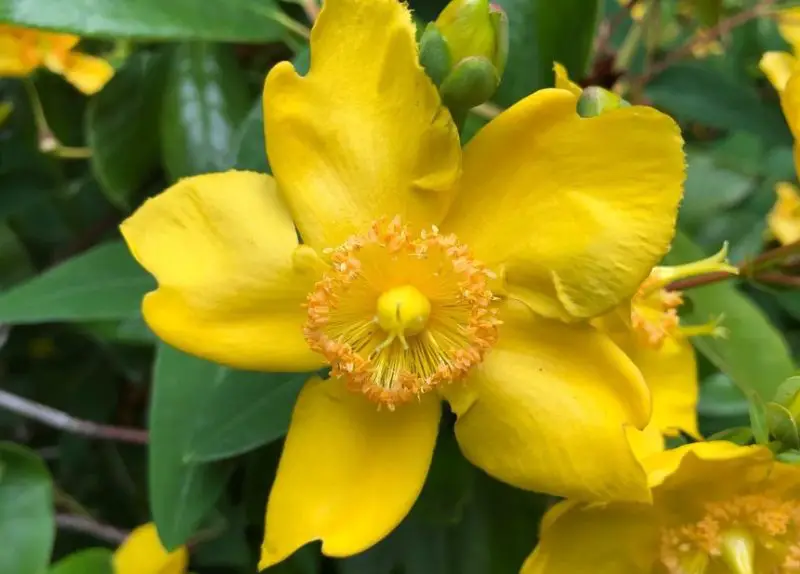
Golden St. John’s Wort, Hypericum patulum, is distinguished by its golden blooms and scruffy, hairless appearance. It originates in China and bears fruit in July and August after blooming in May and June. It can be propagated by planting, cutting, or dividing, and it possesses anti-inflammatory and detoxifying qualities. Its flower language represents grief and is used to heal ailments including hepatitis and muscle soreness.
Holmskioldia Sanguinea
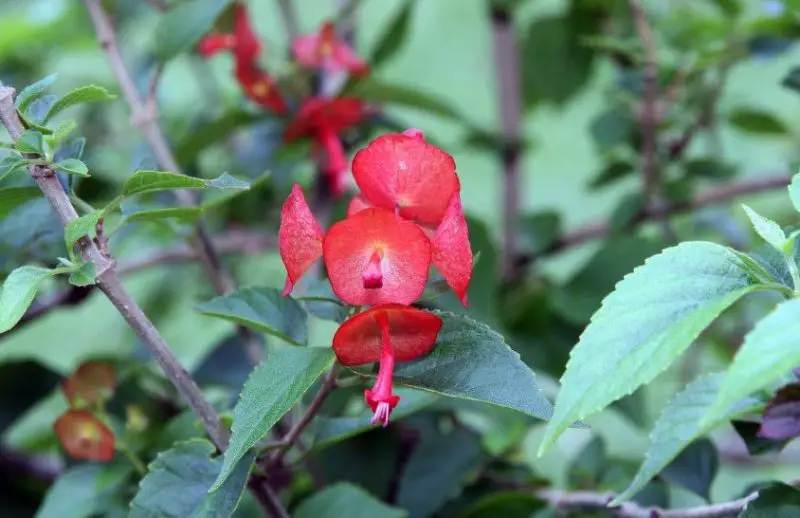
The Verbenaceae family perennial evergreen shrub Holmskioldia sanguinea has quadrangular twigs with hair-covered furrows. The leaves that face it are serrated, membranous, oblong, or widely ovate, with glandular spots and sparse hairs on both sides. Its inflorescence is shaped like a cone and has two to six umbels that each hold three blooms.
Its oblong fruit is enclosed in a vermillion- or orange-red calyx that blooms from late winter to early April. It is a native of the Himalayas, happy in bright weather above 0°C, and useful as an ornamental plant and source of nectar.
Habenaria Radiata
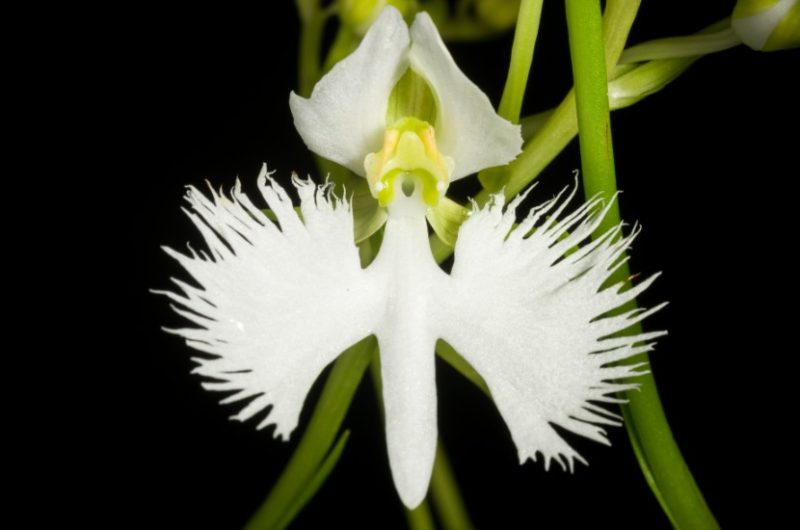
The White Egret Flower, or Habenaria Radiata, is native to Taiwan, Korea, and Japan. There are twelve recognized cultivated varieties of this orchid family member. Due to overharvesting brought on by its breathtaking beauty, its population has significantly declined, endangering its extinction. It is ranked as the third most remarkable species of plant in the entire globe.
Hydnora Africana
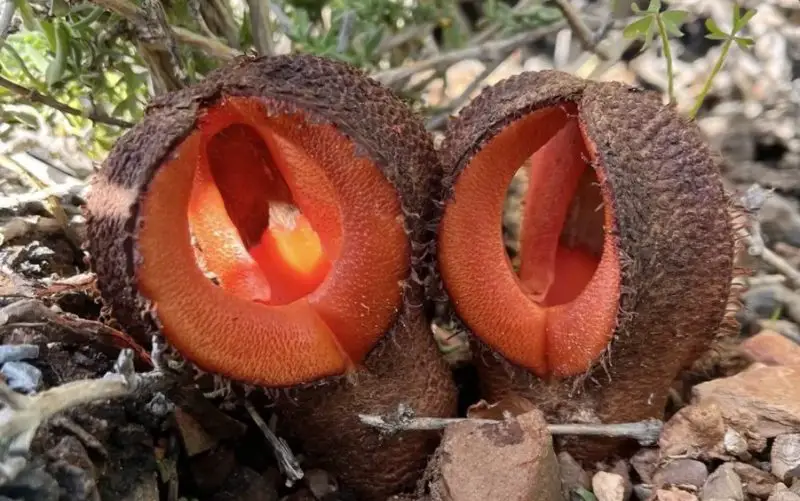
The African Hydnora, or Hydnora africana, is a unique member of the Euphorbia family of plants. It is indigenous to South Africa and grows well in dry desert regions. In Namibia, it is referred to as a grassland Euphorbia. Reaching a height of two meters, this succulent shrub has a silvery grey color. Its roots resemble a honeycomb and are incredibly hard. It’s one of the sixteen most beautiful plants in the world.
Hamamelis Mollis
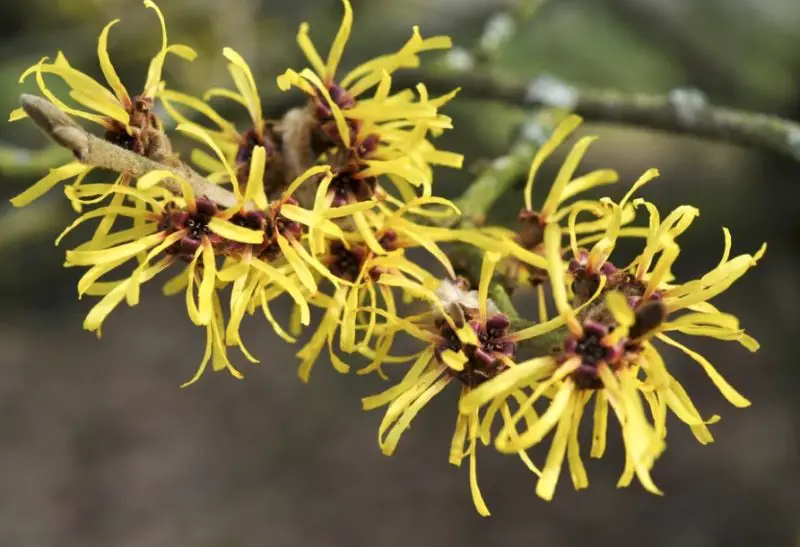
Chinese witch hazel, or Hamamelis Mollis, is a tiny tree or deciduous shrub that belongs to the Hamamelidaceae family and can grow up to 8 meters tall. While the older branches are barren, the younger branches bear a star-shaped shape. Its golden yellow blooms cluster in the leaf axils, resembling golden threads, and it has long oval buds and wide, inverted ovate leaves. It grows along the provinces bordering the Yangtze River and is referred to as the “Winter Flower” because of its early spring bloom.
Hedychium Coronarium
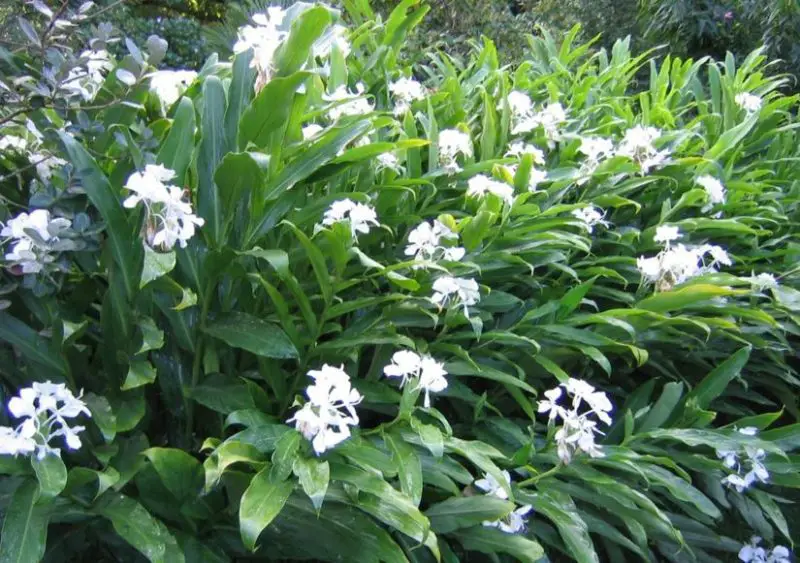
The 1-2-meter-tall herbaceous plant Hedychium Coronarium, often known as the wild ginger lily, is a member of the ginger family. Its leaves are elongated and resemble spikes. It thrives in warm, humid climates and enjoys the early morning and late afternoon sun. It’s a well-liked potted plant with fragrant white blossoms that resemble butterflies. It is the national flower of Cuba and Nicaragua and is native to Asia, India, and Malaysia. It was brought to China during the Qing era.
Heksagonalni Crvena Kamelija
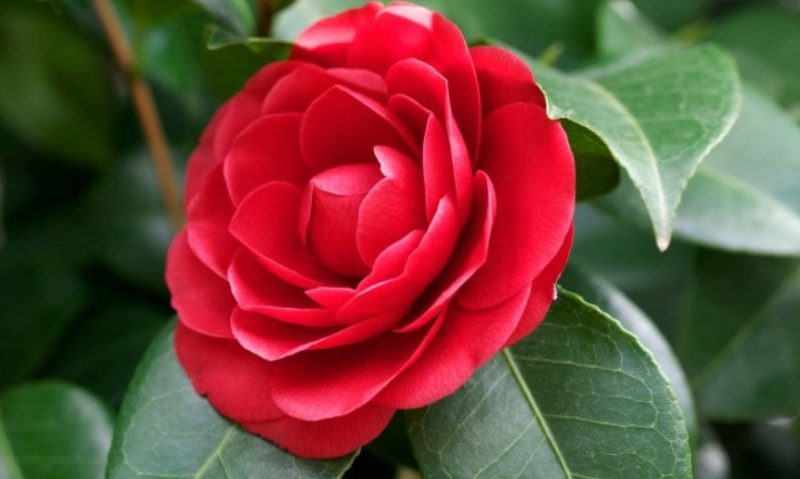
The Heksagonalni Crvena Kamelija, also known as “Songyang Red,” is an exquisitely designed tree with ovate, serrated leaves that are dark green. It bears vivid red flowers that have a diameter of 10 to 12 cm and grows slowly. Every flower is a flawless double blossom, with more than a hundred petals stacked in more than eight or ten layers. It comes from Songyang, Zhejiang, China, and has spiral petal configurations that resemble hexagonal tiles and wheels.
Helianthus Annuus
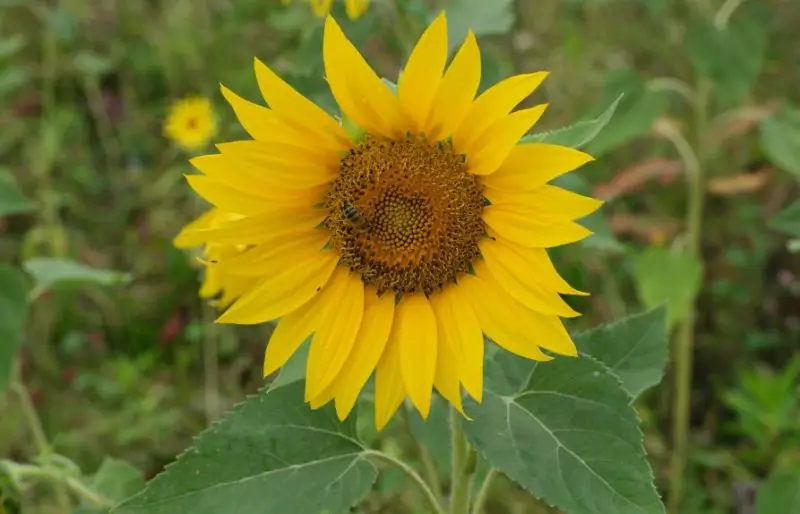
Sunflowers, or Helianthus Annuus, are hardy herbaceous plants in the Asteraceae family. It has yellow disc-shaped flowers and a robust stem covered in thick, white hair. The plant tracks the path of the sun across the sky while in bloom, July through September. It grows well in a variety of soil types in warm regions. It is also resistant to drought. In particular, sunflower oil production adds to the sunflowers’ worth. Sunflowers are also used medicinally.
Helianthus Annuus L.
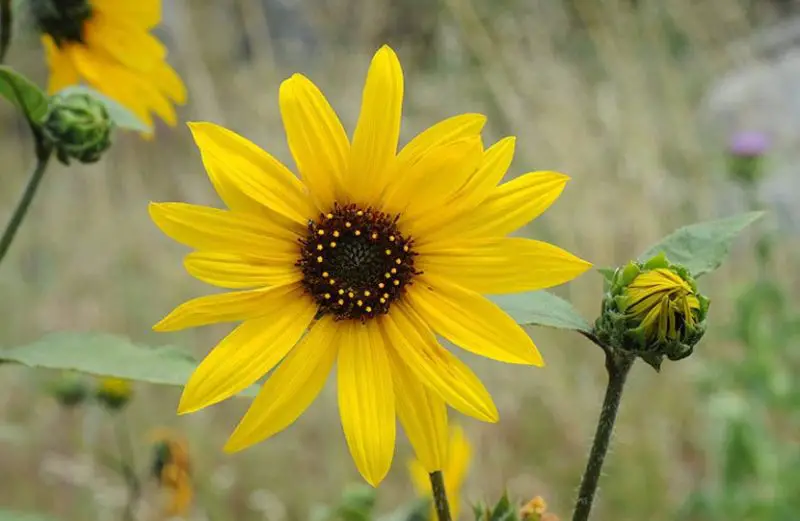
One beautiful type of potted ornamental sunflower from the Asteraceae family is the Teddy Bear Sunflower, Helianthus annuus L. It’s a popular choice for decoration because of its dense foliage and huge, eye-catching blossoms. Despite being relatively young, ornamental sunflower farming has improved quickly. Due to the efforts of breeders, sunflowers with petite flowers, orange double petals, and dwarf variants are now widely available for use in bouquets.
Helianthus Annuus ‘Orange Sun’
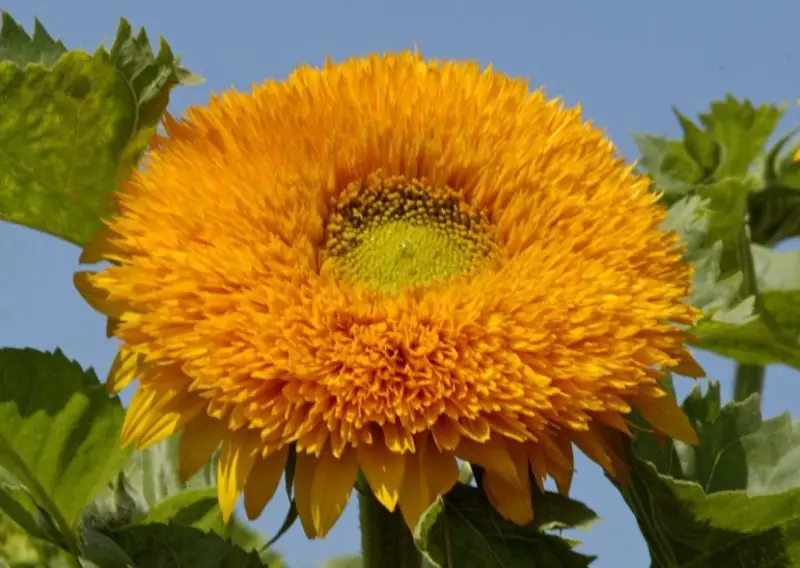
Helianthus Annuus ‘Orange Sun’ is an annual herbaceous plant, reaching 1.0–3.5 meters tall, with hybrid varieties around 0.5 meters. It has a sturdy, erect stem covered in white, coarse hairs. Native to the tropics, it thrives in warmth and tolerates cold. Its bright, sun-like flowers are ideal for ornamental use. The seeds are valuable for producing sunflower seeds and high-quality, low-cholesterol sunflower oil.
Helianthus annuusL.
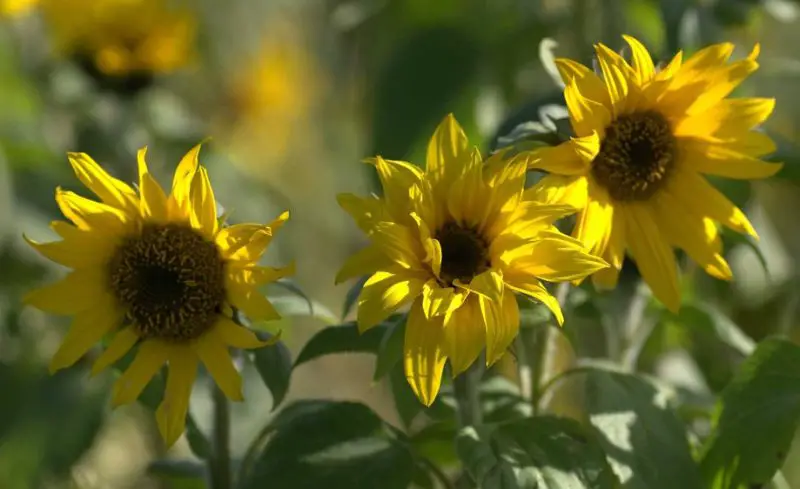
Helianthus annuus L. is the primary variety dominating Taiwan’s flower market and our farm’s most cultivated. It features a prolonged blooming season, an extended vase life, and pollen-free flowers, making it ideal for graduation ceremonies. Originating in North America, it’s grown across the globe. Despite its tropical origins, it adapts well to various temperatures, flourishing in warmth while remaining resilient in colder climates.
Helicodiceros Muscivorus

Native to Europe and West Asia, Helicodiceros muscivorus, often known as the White Star Arum, is a perennial herb with long, narrow leaves and tubers. Although its enormous blossoms are magnificent ornaments, it is rare to see them in all of their beauty due to their brief blooming time. Nevertheless, one noticeable disadvantage of the plant is its peculiar smell, which is similar to rotting meat or musty socks. Nevertheless, the disagreeable smell is essential to the plant’s ability to reproduce because it draws pollinators.
Heliotropium Arborescens
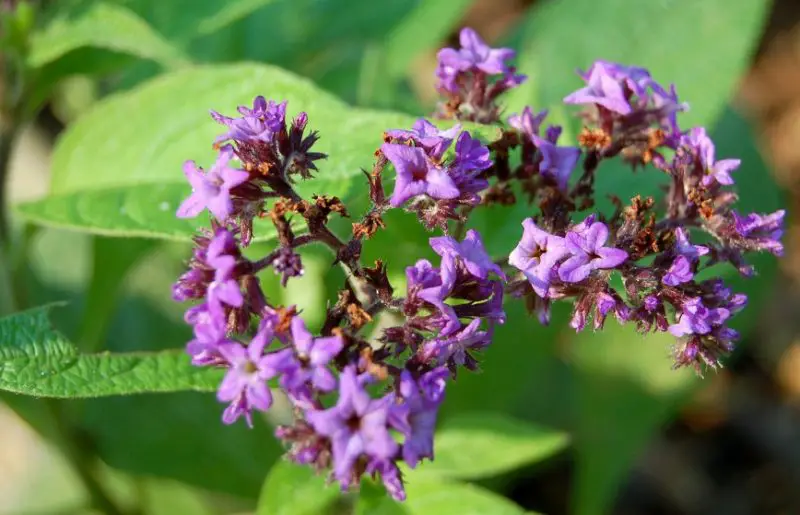
The striking plant Heliotropium arborescens, sometimes called garden heliotrope, has rich, emerald-green leaves that gracefully curve. Its little flowers have a distinct, alluring scent and grow into fuzzy, ball-shaped clusters in violet or purple hues. In climates that are suitable, it can bloom all year round, but from April to June, it blooms most frequently. This miniature shrub, native to Peru, likes damp conditions and lots of sunlight for healthy development and blooming.
Hosta Plantaginea
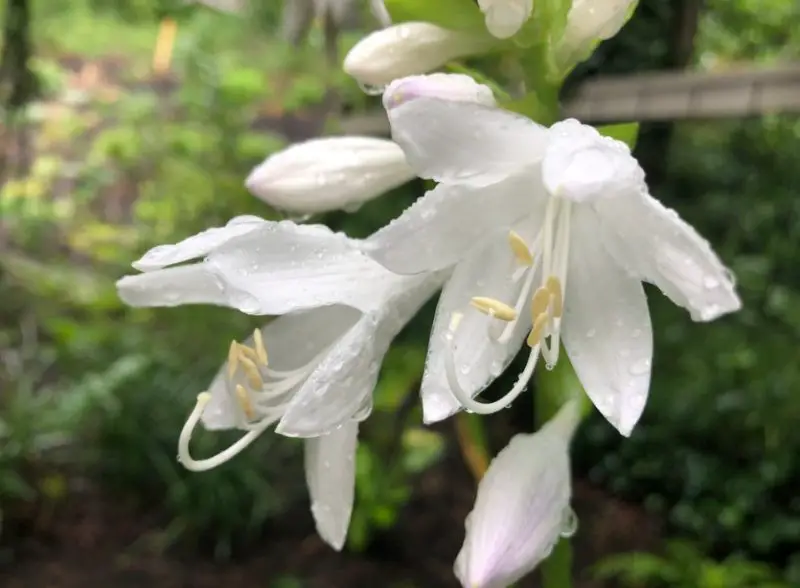
August Lily, or Hosta plantaginea, is a perennial herbaceous plant with heart-shaped leaves that are grouped at the base. Reaching 40–80 cm in height, its flower stalks yield fragrant white blooms that can be found alone or in clusters of two or three. Its fruit is a cylindrical capsule that ripens from August to October.
It is native to Japan, grows best in damp, shaded areas, and spreads by seeds or division. The plant is prized for its decorative use in gardens and for the therapeutic qualities of its roots.
Hosta Ventricosa
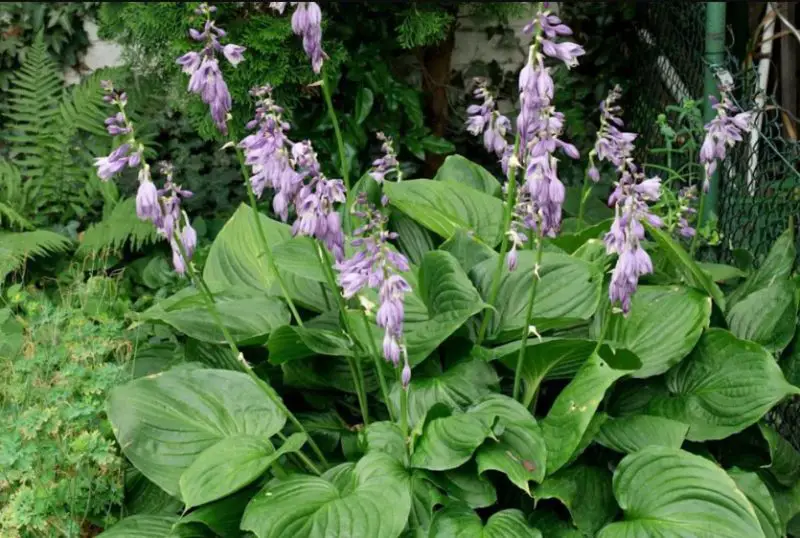
Hosta ventricosa, sometimes referred to as Purple Eared Hosta, is a perennial herbaceous plant with white bracts that are rectangular to lanceolate and ovate to oval-heart-shaped leaves. It produces purple-red blooms in June and July, followed from July to September by a cylindrical capsule fruit.
It is native to China and Japan, where it grows best in damp, shaded areas and spreads by seeds or division. The plant’s blossoms represent romance and longing, and it can be used medicinally to treat a variety of illnesses.
Houttuynia Cordata
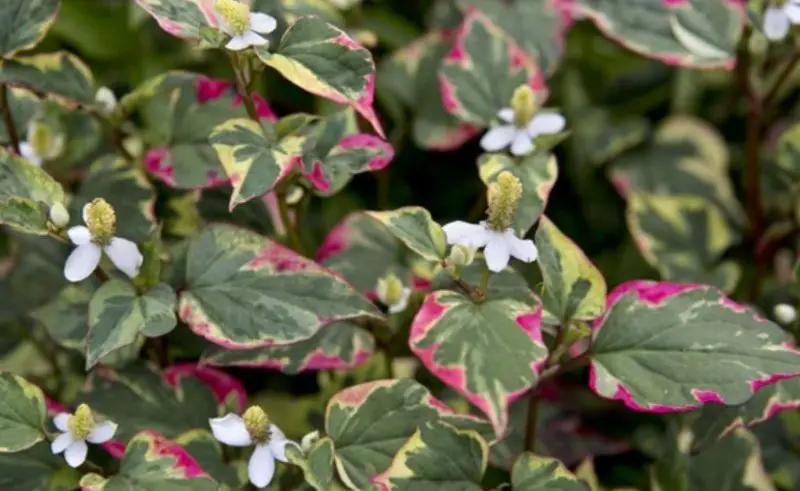
Fishmint, or Houttuynia cordata, is a popular Chinese medicinal herb valued for its restorative qualities. In the summer, when the stems and leaves are lush, the dried portions above ground are harvested. This plant, which belongs to the Saururaceae family, has heart-shaped leaves, flattened cylindrical stems, and spiky yellow-brown inflorescences. When crushed, it gives off a distinctly fishy scent. Modern pharmacological research supports the use of fishmint to cure a variety of illnesses, as well as to detoxify, remove heat, and reduce swelling.
Hoya Carnosa
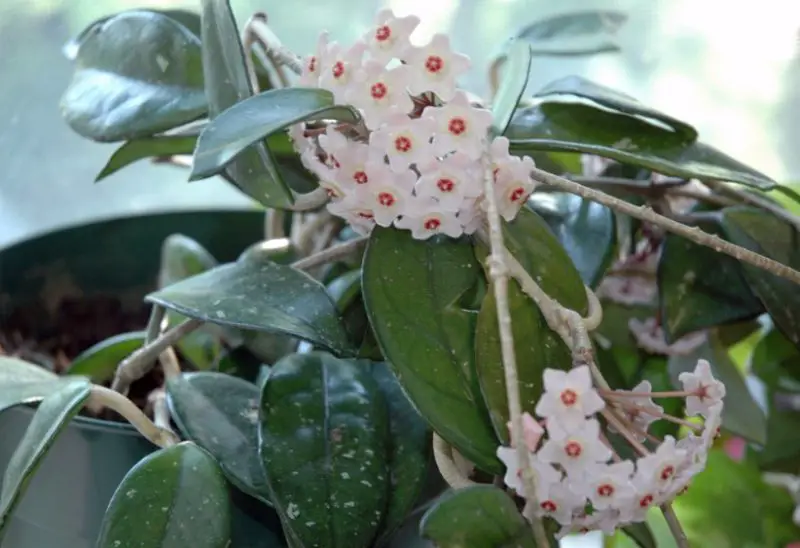
Hoya Carnosa, or Wax Plant, is a perennial herbaceous vine in the Asclepiadaceae family. Its long stems produce fleshy, ovate leaves and delicate, fragrant white flowers with a hint of red in the center. These star-shaped blooms cluster into spherical umbels, giving rise to the plant’s nickname, “Wax Plant.”
Native to tropical Asia, it thrives in warm, humid conditions and is often found climbing trees or rocks in forested areas. With medicinal uses, it’s valued for its ability to clear heat, detoxify, and relieve various ailments.
Hyacinthoides Non-Scripta

The English bluebell, or Hyacinthoides non-scripta, is a bulbous perennial belonging to the Asparagaceae family. It features clusters of fragrant, purple-blue blooms on drooping stalks with linear leaves. Nestled among lush forest floors, these bell-shaped blooms with cream-colored anthers thrive in the dappled shadow of deciduous woodlands. Originating in the British Isles and Northwestern Spain, this plant is well-known for its captivating springtime display in Western gardens.
Hyacinthus Orientalis
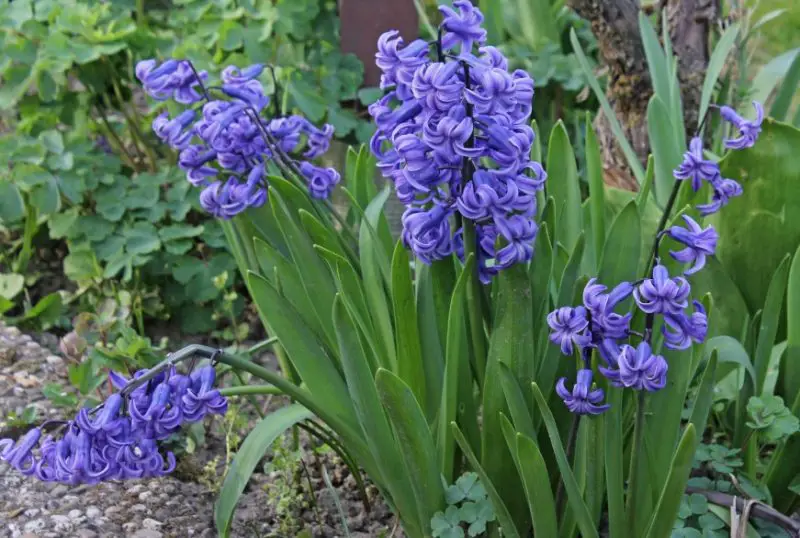
Hyacinthus orientalis, a member of the Hyacinthaceae family, boasts egg-shaped bulbs and lanceolate leaves. Its vibrant flowers, ranging from blue to red, bloom in early spring, emitting a fragrant aroma. Originating from the Mediterranean and Asia Minor, it prefers warm winters and cool summers in well-drained soil.
This popular ornamental plant not only beautifies gardens but also purifies indoor air. However, its bulbs are toxic if ingested, so caution is advised. Symbolizing victory and joy, it’s a beloved choice for weddings and decorations.
Hydrangea Macrophylla
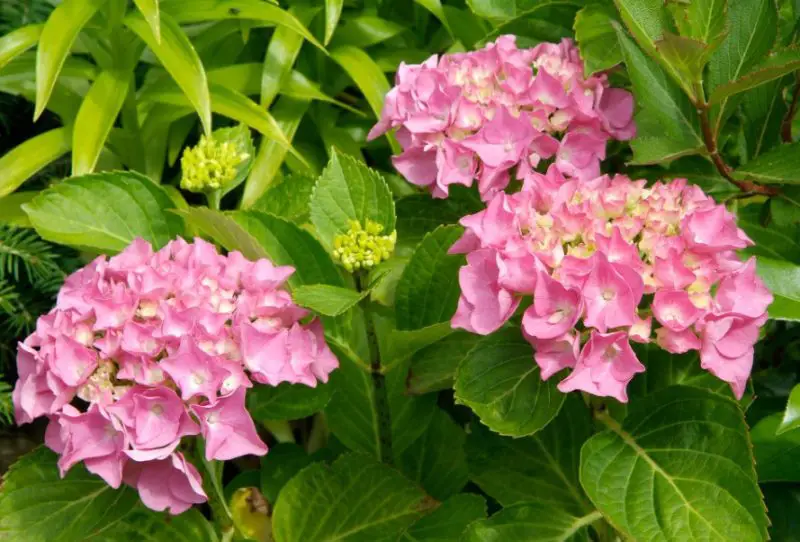
Large, dense flower clusters, broad leaves, and a spherical canopy are characteristics of the Hydrangea macrophylla, often known as the Bigleaf Hydrangea. Its silky petioles hold ovate or elliptical leaves on thick twigs. The flowers form spherical clusters and come in colors of pink, light blue, or white.
It comes originally from China and Japan and blooms from June to August. The acidity of the soil affects the color of its flowers. It likes semi-shaded areas with well-drained, fertile soil. Cutting, stacking, and division are examples of propagation techniques.
Hydrocotyle Vulgaris

Pennywort, or Hydrocotyle vulgaris, is a perennial ground cover plant that is distinguished by its kidney-shaped leaves and thin stems that root at the nodes. Its leaves are deeply divided, like coins made of broken copper. This evergreen shrub likes damp conditions and blooms from May to September. Pennywort is a plant that grows in tropical areas such as Vietnam and eastern and southern China. It spreads by seeds or stem propagation.
Hylocereus Undatus
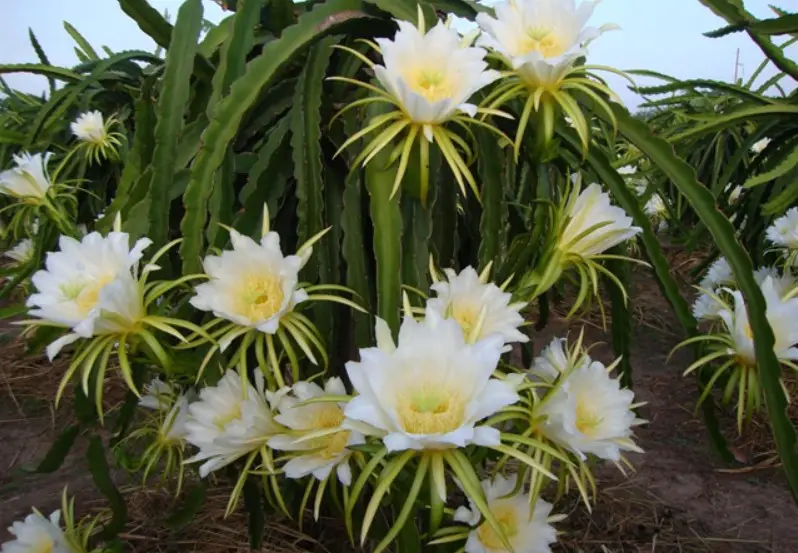
The unusual succulent vine Hylocereus undatus, sometimes called Dragon Fruit, has big, funnel-shaped blooms and deep green, triangularly ridged branches. It detests cold and gloom and grows best in warm weather and sunlight.
It is native to Mexico, disease-resistant, and soil-tolerant. It has decorative as well as culinary value. The main edible portion is the blossom bud, which is well-known for its calming and cough-quenching qualities and is widely consumed both domestically and abroad.






